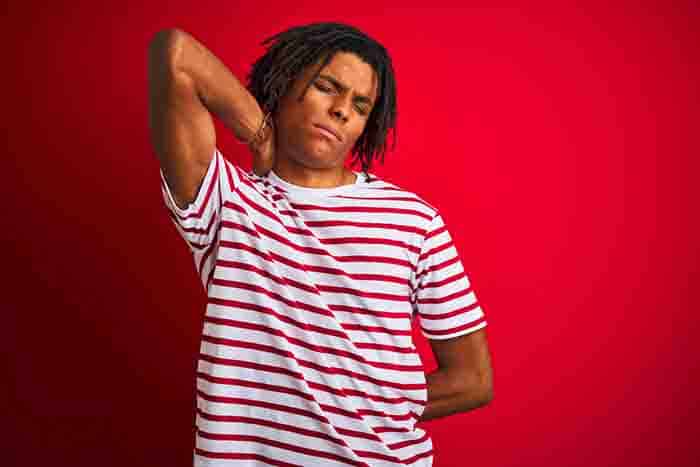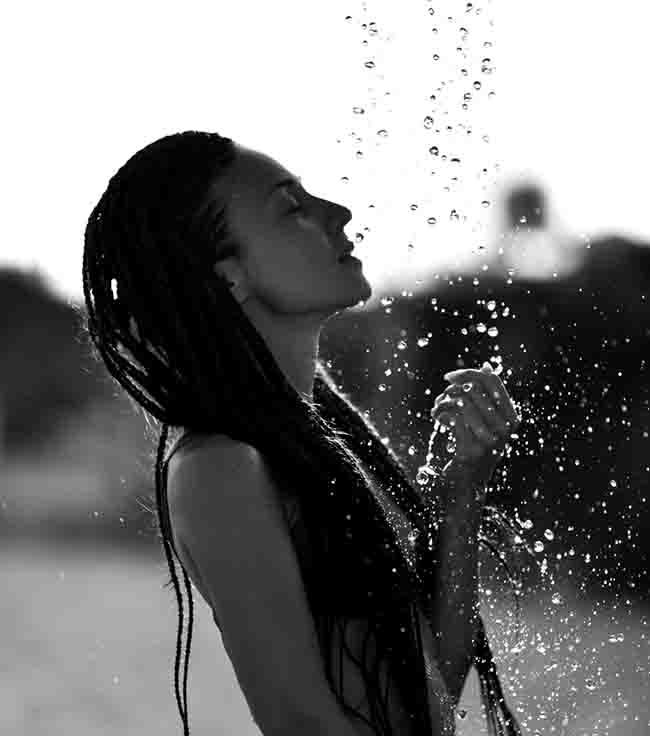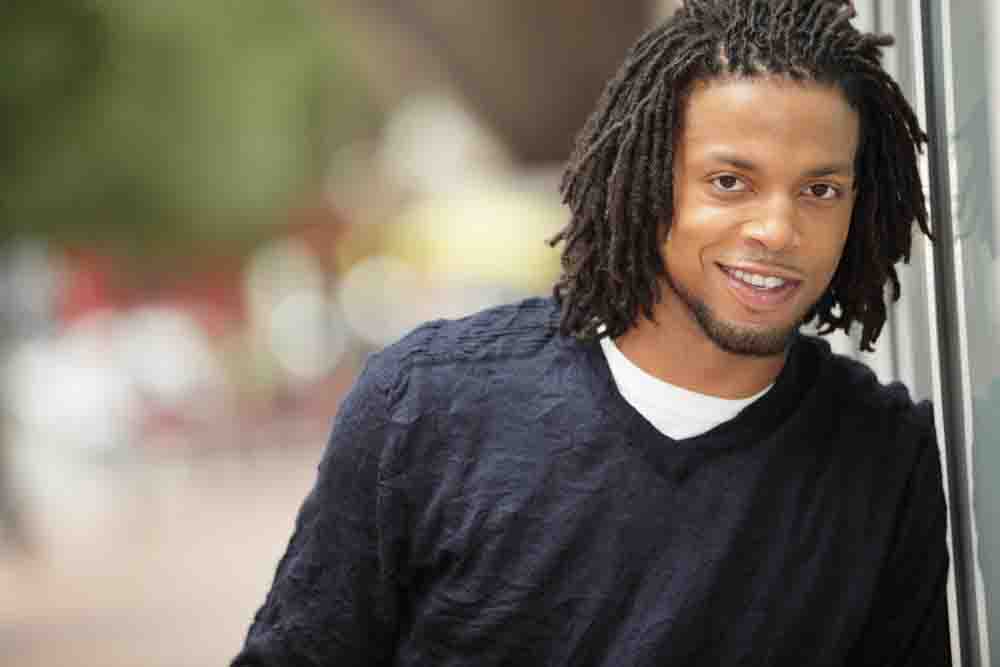Dreadlocks have become so popular worldwide that probably you’re now considering getting your locs for the first time. But as a beginner, you may have many questions like do dreads hurt, how to prepare yourself for getting locs, how to take care of them, etc.
Well, dreadlocks hurt to an extent. It’s because this hairstyle includes lots of tugging to create the locs. Also, if you have a sensitive scalp, the process can bring your scalp itchiness, discomfort, and pain.
But fortunately, some practical ways can reduce the pain quickly and also prevent them from coming back pretty often. Read along to learn the possible reasons behind the pain and how to lessen your dreadlock-related pain easily.
Probable Causes Of Dreadlock-Related Pain

There is debate in proving what exactly causes the dreadlock-related pain and discomfort. Here are some causes that can create pain in your head:
1. If you have a sensitive scalp, too much pulling and tugging will trigger your scalp sensitivity, and you’ll end up having pain in your head no matter which hair dreaded style you choose.
2. Wet locs can cause severe pain too. If you keep your dreads damp for a long time, it’ll make your hair core aching; that’s why you should dry hair after a shower as quickly as possible.
3. Using a neglect method to maintain your dreadlocks can cause long term pain in your head.
4. If new hairs are growing in the wrong dread, you need to tug them out and twist them again correctly. This process can be painful.
5. In case you used to comb your hair a lot before your first dreadlocks, then an abrupt pause in combing can cause itchiness in your scalp, and you may feel temporary pain in your head from time to time.
What Causes Pain When Not Washing Your Dreadlocks?

Not washing your dreadlocks properly can also cause pain. Here’s why:
Not washing your dreadlocks properly will build up dirt on your scalp and locs, which will make your head feel heavy and, consequently, cause headaches.
If you don’t wash your scalp once or twice a week, you may end up experiencing a build-up of dead skin, sweat, excess sebum, and dandruff in follicles, which will make your scalp itchy and heavy, which will lead you to pain in your head.
If you don’t wash your dreadlocks, they will start to smell bad.
How To Ease Dreadlock Pain?

Here is how to lessen dreadlock-related pain:
- Apply Soothing Oil or Gel: A great way to quickly relieve the pain is to apply jojoba oil, vitamin E oil, or aloe vera gel. Applying these will make your locs feel soft, lightweight, and soothe your itchy scalp.
- Give Your Scalp and Neck a Massage: Be gentle and give your scalp, shoulder, and neck a deep tissue massage. Apply some vitamin E oil while massaging, as it’s proven to promote blood flow.
- Improve Blood Circulation with Root Massage: Run fingers through the root for 5 to 8 min. This method will improve the blood circulation on your scalp and reduce pain.
- Adjust Sleeping Technique: Adjust your sleeping technique. Wearing a nightcap when you go to sleep or putting hair over the other site above the pillow can reduce hair tension.
- Avoid Tight Hairstyles or Re-twisting: Avoid using a tight hairstyle or re-twisting every day for a few days to reduce the pain.
Note: If your scalp feels sore, tender, or extremely painful, don’t hesitate to make your appointment and seek medical advice.
How To Prevent Dreadlock Pain?
You may feel severe pain at first, but your scalp and hair adjust to it as your hair grows, and you’ll feel less discomfort.
However, there are some ways that you can follow to prevent the occurrence of dreadlock pain.
1. Take painkillers before you make your dreadlocks.
2. Give yourself a deep tissue massage once a month to promote blood circulation.
3. Applying aloe vera gel or jojoba oil can release tension in the root.
4. Follow a neck exercise routine regularly in your neck area.
5. Clean hair with fresh water and clarifying shampoo; otherwise, the normal shampoo will cause dandruff and leave residue in your locs.
6. Go for a free-form dreadlock style to let your hair grow freely.
7. Always allow your locks to dry completely before making a hairstyle.
8. Make sure you follow a proper maintenance routine for your dreads and new hair.
9. Always detangle your locs strand using fingers and oil spray.
10. Instead of retightening locks manually, consider swimming in saltwater or chlorine to tighten your locs up automatically.
Why Do The Roots Of My Dreads Hurt?
When people do their dreadlocks on their own for the first time, most people do wrong sectioning, which causes irritation in the root.
The hair-dreaded process also involves lots of tugging and pulling that make your hair get pulled and causes excess tension and stress between root and scalp. Therefore, you feel hurt in the roots of your locks.
What Does It Mean If Your Scalp Hurts When You Move Your Hair?
If your scalp hurts every time you move your hair, then be aware and consider taking medical advice quickly. A painful scalp can be a symptom of a chronic skin condition. It can also be a sign of infection in your scalp.
If you ignore it, the pain can get worse over time. That’s why make an appointment today to visit a doctor if you’re experiencing this issue.
How Do Beginners Start Dreads?

No matter whether you want to make crochet, free form, or natural dread style, you need to ensure you’re doing it right. Otherwise, your dreads can be pretty painful, and the pain can get worse eventually.
Here’s how to start dreads as a beginner
- Make sure you’ve washed your hair before braiding.
- Use a blow dryer to dry your hair.
- Section your hair evenly according to the size of the dreadlocks you want.
- Now make your three-strand braid, then wrap a single strand of hair around the braid.
We’d advise you not to make your locs too tight or pull hard. Be aware that pulling your hair tightly can create too much tension and stress on the roots and hurt your scalp. And if you have a sensitive scalp, you have to be extra gentle while making braids and maintenance.
How Do You Maintain Dreads?
Here’s what you should follow for your dreadlock maintenance routine:
1. Dreadlocks can’t be washed the same way you wash your natural hair. You should wash your dreadlocks once or twice a week.
2. Wash your hair and scalp with warm water.
3. Clean your dreads with clarifying shampoo for 2-3 minutes.
4. Spray hair moisturizer as needed and apply essential oils once a week.
5. Wear a silk scarf or sleep on a silk pillow cover.
6. Massage your scalp for a few minutes before going to bed.
7. Keep hair above the pillow in the opposite direction while sleeping, as it can reduce some pulling and stress from your locs.
8. You can search on YouTube for more maintenance idea for dreadlocks.
FAQs
You should start your hair dreaded process when your hair is clean and completely dry. Wet dreads can stink and also develop mold earlier than usual.
If you can keep your free-formed, crocheted, or backcombed hair healthy, you can split locs pretty efficiently. Otherwise, tangled and knotted locs can hurt your scalp while splitting.
Yes, Jalen Hurts had dreads, but he cut off his dreadlocks afterward because of the CFP promise.
It’s understandable if people confuse faux locs with dreadlocks as they look similar. But NO, faux locs aren’t the same as dreadlocks; they have differences.
Almost all the people who wear dreads want to make a different statement. Long dreads symbolize a rebellion against conformity, letting go of martial possessions, spiritual intent, supernatural power, solidarity, etc.
First section your hair, make a three braid, then wrap Marley hair around the classic braid. Don’t pull the hair too tightly; otherwise, your braids will hurt your scalp later.
If you have loose hair in dreads, tug them out and rub them between your fingertips. Once you create a dread ball of the tugged-out hair, insert them into the dreadlocks with a crochet hook.
The best way to twist your dreads is clockwise. This is usually the hair growth pattern for many people. After you’ve dreadlocks installed in the clockwise process, you’ll notice it causes less irritation and a sore neck.
If you don’t have enough time to make an appointment for a hairstylist, you can retwist dreads at home. First, section your hair and start from the back. First, finger rolls your dreads, then apply some wax to the palm and firmly roll the dreads again between your palms.
Generally, locs remain twisted for 4 to 6 weeks. So if you retwist your hair after every 5 weeks, it should be fine.
It depends on your locs length, the number of strands, and your maintenance routine. If your hair is rough and tangled, it can take longer than usual. However, usually dreads to take 5 to 7 hours for the retwist process.
Yes, they can. But it’s not as common as you might think. Most people who get goddess locs say that their hair feels stronger and healthier after getting them done.
Getting mermaid locs will not hurt your hair. There are no chemicals involved in the process, so there is no risk of damaging your natural hair. The only thing you have to be careful about is keeping a towel on your head while you wash and condition it.
Dreadlocks do not inherently pull your hair out. However, improper installation, tight hairstyles, or excessive tension on the scalp can cause hair breakage or traction alopecia.
Getting dreads for the first time may cause discomfort due to the pulling and twisting of the hair during the installation process, but it should not be excessively painful. Any pain or discomfort should be temporary and subside after a few days.
The negative side of dreadlocks can include potential damage to the hair if not properly maintained, scalp irritation or discomfort due to tightness or buildup, and societal stigma or discrimination in some cases.
Scalp discomfort with locs can be caused by various factors, including tightness, buildup, or tension. Proper care and maintenance, such as regular washing and avoiding excessive tightness, can help alleviate scalp discomfort.
The awkward stage of dreadlocks refers to the early stages of the locking process when the hair may stick out, appear uneven, or require more maintenance. This stage typically improves as the locs mature and settle over time.
It is normal to lose some hair during the dreadlocking process as loose hairs are incorporated into the locks. However, excessive hair loss can be a sign of improper installation or maintenance.
While dreads may require less daily maintenance once fully matured, they can be time-consuming and require periodic maintenance. Braids offer versatility in styling options but may require more regular maintenance. The ease of dreads versus braids ultimately depends on individual preferences and hair type.
Dreadlocks pain, if any, usually lasts for a few days after installation as the hair adjusts to the locking process. Proper care and maintenance, such as avoiding excessive tightness, can help minimize pain.
Dreadlocks require regular maintenance, including washing, retightening, and avoiding buildup, which can be time-consuming and require effort. However, with proper care and maintenance, they can be relatively easy to manage.
When starting dreads, expect some changes in your hair’s texture, appearance, and maintenance routine. It may take time for the locs to mature and settle into their desired form.
Dreads should not excessively pull on your scalp. If you experience discomfort, it may be due to tightness or tension, and adjustments may be needed to alleviate the issue.
Scalp discomfort when touching your hair could be due to various reasons, such as scalp sensitivity, tightness, or buildup. Proper care, including regular washing and avoiding excessive tightness, can help soothe the scalp.
To soothe tight locs on your scalp, you can try applying aloe vera gel, diluted tea tree oil, or a scalp oil specifically formulated for locs. Gentle massages and avoiding excessive tension can also help.
The level of discomfort during the hair locking process can vary depending on individual tolerance and the method used. However, excessive pain is not normal and may indicate improper installation or maintenance.
Dreadlocks may feel tight initially after installation as the hair adjusts to the locking process.
The duration of hair locking can vary depending on factors such as hair type, length, and method used. It can take several months to years for the locs to fully mature and settle.
Interlocking, a method of tightening locs, should not be excessively painful. If it is, it may indicate improper technique or excessive tension, and adjustments may be needed to prevent damage.
Locs should not break your hair if installed and maintained properly. However, excessive tension, tightness, or manipulation can potentially cause hair breakage or damage.
Proper care and maintenance, including regular washing, can help prevent unpleasant odors associated with dreadlocks. Using natural oils or products specifically formulated for locs can also help keep them smelling fresh.
The duration of dreadlocks pain can vary depending on individual tolerance and the method used. It is typically temporary and should subside within a few days to weeks.
Properly preparing your hair for dreads may involve washing, detangling, and sometimes sectioning the hair. It is best to consult with a professional loctician to determine the specific preparation process based on your hair type and desired results.
Retwisting, a common maintenance technique for locs, should not be excessively painful. If you experience pain during retwisting, it may indicate improper technique or excessive tension, and adjustments may be needed.
Pain from dreads can be relieved by avoiding tight hairstyles, practicing gentle scalp massages, using scalp oils or soothing gels, and avoiding excessive tension or manipulation of the locs.
Sleeping with painful locs may require adjusting your sleeping position, using a silk or satin pillowcase, or tying your locs in a loose, protective style. Experimenting with different techniques can help you find what works best for your comfort.
Proper care and maintenance, including regular washing, moisturizing, and avoiding excessive tightness or manipulation, can help prevent damage to the hair with dreadlocks.
It may take several months to a year or more for dreadlocks to settle and fully mature into their desired form. Patience and proper maintenance are key during this process.
Starter locs may feel stiff initially due to the tightening process and the use of styling products. As the locs mature, they should soften and become more flexible.
Relaxer, a chemical hair straightening treatment, is not typically recommended for use on dreadlocks as it can weaken the hair and affect the locking process. It’s best to consult with a professional loctician for appropriate care.
Keeping dreads tight may involve regular retwisting or interlocking, avoiding excessive manipulation or tension, and using locking gels or products specifically formulated for locs.
Scalp discomfort when letting your hair down may be due to the weight or tightness of the locs. Adjusting the hairstyles, avoiding excessive tightness, or using scalp oils or gels can help alleviate the discomfort.
Dreading your hair should not cause hair loss if done properly. However, excessive tension, tightness, or manipulation can potentially cause hair breakage or traction alopecia.
Interlocking dreads may hurt if excessive tension or improper technique is used. It’s important to have interlocking done by a professional loctician to minimize the risk of discomfort or damage.
Starter dreads may require regular maintenance, such as washing, moisturizing, and retwisting or interlocking to keep them neat and encourage locking. Consulting with a professional loctician can provide guidance on treating and maintaining starter dreads.
Conclusion
So you now have the answer of do dreadlocks hurt, what causes the pain, and how to reduce the pain. After you’ve had dreadlocks installed, it’s natural to feel pain on the neck, shoulder, and especially on roots.
But if you can give yourself a gentle massage on the neck and head, you can reduce the pain effectively. If you can’t do it yourself, search for help from your family or friends.

